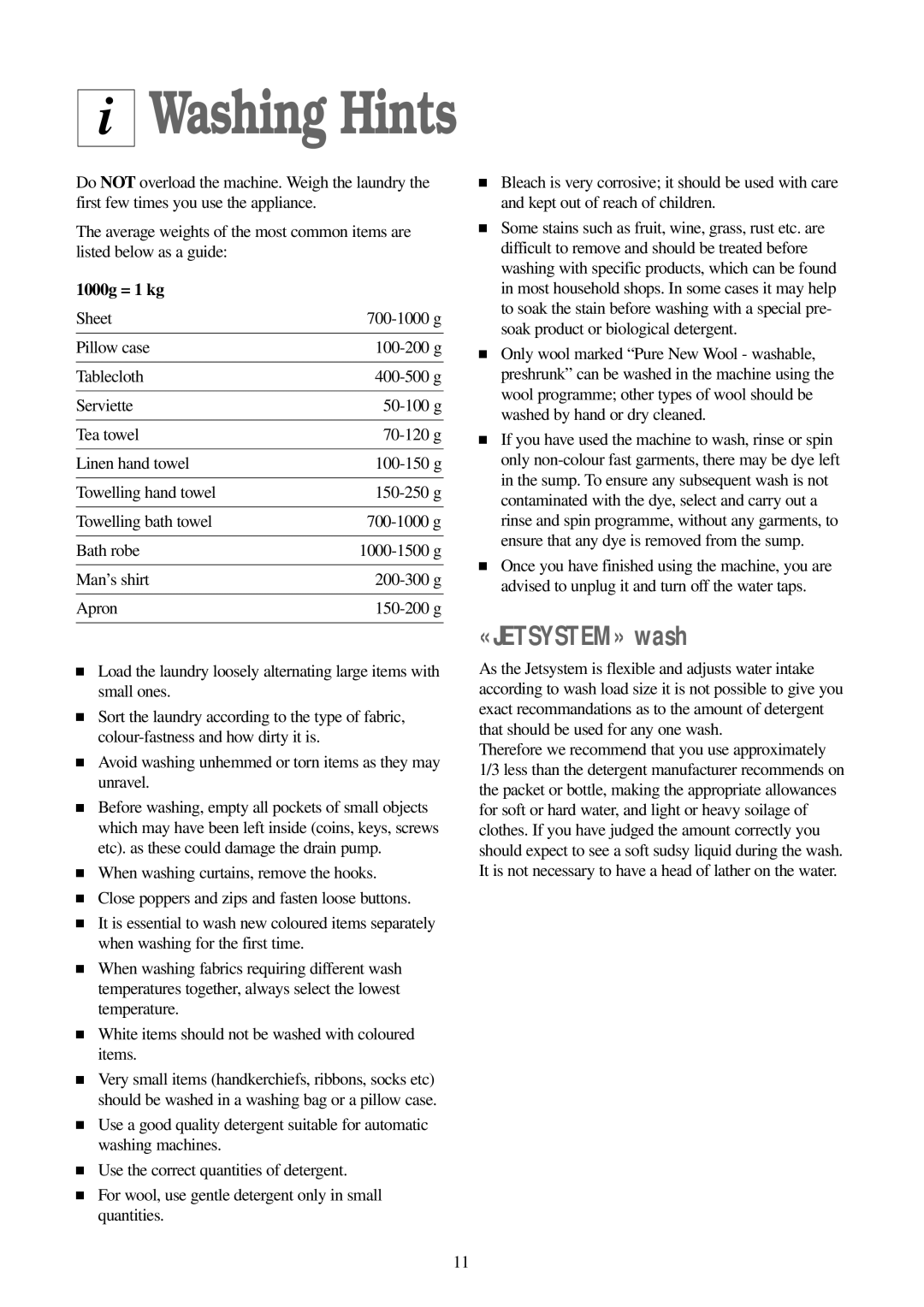iWashing Hints
Do NOT overload the machine. Weigh the laundry the first few times you use the appliance.
The average weights of the most common items are listed below as a guide:
1000g = 1 kg |
|
Sheet | |
|
|
Pillow case | |
|
|
Tablecloth | |
|
|
Serviette | |
|
|
Tea towel | |
|
|
Linen hand towel | |
|
|
Towelling hand towel | |
|
|
Towelling bath towel | |
|
|
Bath robe | |
|
|
Man’s shirt | |
|
|
Apron | |
|
|
■Load the laundry loosely alternating large items with small ones.
■Sort the laundry according to the type of fabric,
■Avoid washing unhemmed or torn items as they may unravel.
■Before washing, empty all pockets of small objects which may have been left inside (coins, keys, screws etc). as these could damage the drain pump.
■When washing curtains, remove the hooks.
■Close poppers and zips and fasten loose buttons.
■It is essential to wash new coloured items separately when washing for the first time.
■When washing fabrics requiring different wash temperatures together, always select the lowest temperature.
■White items should not be washed with coloured items.
■Very small items (handkerchiefs, ribbons, socks etc) should be washed in a washing bag or a pillow case.
■Use a good quality detergent suitable for automatic washing machines.
■Use the correct quantities of detergent.
■For wool, use gentle detergent only in small quantities.
■Bleach is very corrosive; it should be used with care and kept out of reach of children.
■Some stains such as fruit, wine, grass, rust etc. are difficult to remove and should be treated before washing with specific products, which can be found in most household shops. In some cases it may help to soak the stain before washing with a special pre- soak product or biological detergent.
■Only wool marked “Pure New Wool - washable, preshrunk” can be washed in the machine using the wool programme; other types of wool should be washed by hand or dry cleaned.
■If you have used the machine to wash, rinse or spin only
■Once you have finished using the machine, you are advised to unplug it and turn off the water taps.
«JETSYSTEM» wash
As the Jetsystem is flexible and adjusts water intake according to wash load size it is not possible to give you exact recommandations as to the amount of detergent that should be used for any one wash.
Therefore we recommend that you use approximately 1/3 less than the detergent manufacturer recommends on the packet or bottle, making the appropriate allowances for soft or hard water, and light or heavy soilage of clothes. If you have judged the amount correctly you should expect to see a soft sudsy liquid during the wash. It is not necessary to have a head of lather on the water.
11
